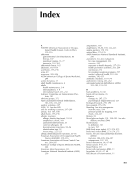v The occupational health nurse’s practice continues to expand with a focus not only on protection from work-related injury and disease, but also the provision of professional nursing care for the management of occupational and nonoccupational clinical condi- tions and health promotion activities that have become integral to the nursing role in the work setting. This trend has created a need for practice guidelines to help delineate para- meters of care. Occupational Health Nursing Guidelines for Primary Clinical Conditions, Fourth Edition, is expanded and revised. The number of guidelines presented continue to grow based on needs identified from practitioners in the field, tripling those in the first edition. Guide- lines have been categorized in three different areas: Prevention and Screening, Primary Care, and Emergency Care. Each guideline follows the same format: problem definition, clinical and related characteristics, and policy perspectives clinical objectives, assess- ment criteria and nursing interventions specific conditions requiring medical referral and follow-up activities. Each clinical guide has been reviewed by nursing and medical ex- perts, and some have been supplemented with summary or comparison tables and illus- trations for a clearer understanding of the clinical characteristics or treatment measures involved. In addition, the manual has several sections related to the practice including special pro- gram areas important to occupational health nursing (e.g., surveillance, case manage- ment, respiratory protection), a resource aid section to assist the occupational health nurse in the delivery of occupational health services, and an appendices section with im- portant and useful information. This book is considered a guide for clinical and programmatic areas in occupational health nursing practice, and each guideline should be treated as such. The guidelines pre- sume that when any employee enters the occupational health setting, the occupational health nurse obtains an appropriate health and occupational history and conducts exami- nations relevant to the presenting problem and history within the limits of the applicable State Nurse Practice Act. These guidelines are written to provide a basis for such actions while allowing for, or rather demanding, an individualized plan of care. For many common health problems seen in the occupational health unit, independent nursing interventions are appropriate. However, because of the interdependent nature of nursing and medicine, collaborative strategies often are appropriate, requiring physician referral or intervention. Though each of the guidelines in this book notes specific condi- tions warranting referral, every situation is different, and professional judgment must guide the occupational health nurse in making referrals to other health care professionals. In addition, it is important to recognize that the occupational health nurse or other occu- pational health care provider does not constitute a replacement for the employee’s pri- mary health care provider referrals and collaboration with the employee’s primary health care provider are an essential component of the employee’s overall health care. We believe that clinical nursing and programmatic guidelines used within a model of col- laborative practice in occupational settings can help foster and clarify communication Preface
Purchased from OEM Press by nofirst nolast (). (C) 2013 OEM Health Information, Inc. All rights reserved.












































































































































































































































































































































































































































